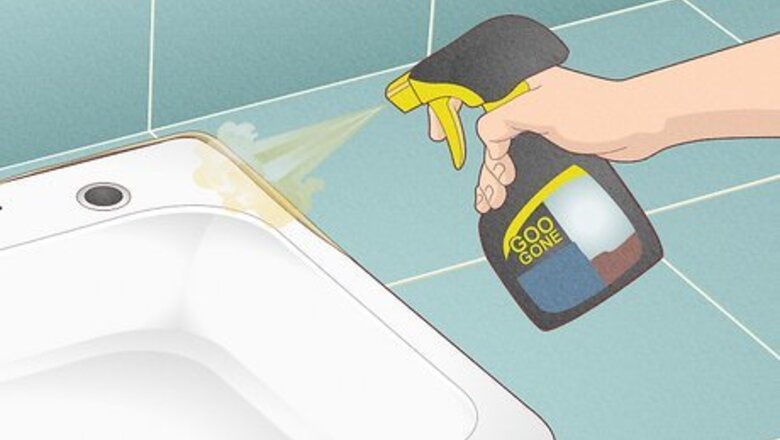
views
- Before using any solvents or soaps, try scraping the residue off gently with a putty knife or utility knife.
- Commercial caulk removers are your best option if you have access to it.
- White vinegar, baby oil, WD-40, and mineral spirits will all soften up silicone caulk to remove it.
- Use acetone or nail polish remover for polyurethane caulk.
Goo Gone Caulk Remover
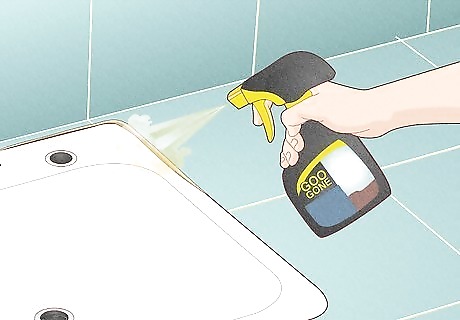
Commercial caulk remover is the best for latex-based caulk. First, spray the product onto the residue. Let it sit for 2-5 minutes. Then, scrape off the residue with a putty knife. Use a stiff nylon brush to brush away the particularly pesky residue that won't come off with the putty knife. Once you've brushed and scraped away all the caulk, wipe down the surface with a soapy cloth. Let the surface air dry when you’re done. Goo Gone is the most widely-recognized and respected caulk remover brand, but there are generic versions out there that should work as well. Anything that reads “caulk remover” will do the trick.
Utility knife

You may not need chemicals at all if the residue is fresh. If you don't have any of the listed detergents or you want to avoid using harsh chemicals, just use the straight edge of a razor or utility knife. Simply cut out the old caulk and the remaining residue with the blade. When you're done, use a gentle household cleaner and a rag to clean off any remaining caulk dust. Avoid using this method on softer surfaces, like wood, as the sharp utility knife may scratch the wood's surface. A plastic razor blade is also a good option, especially since it's less likely to scratch anything.
Putty knife or caulking spatula
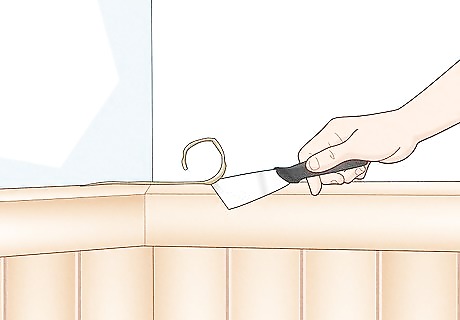
Try either of these options to remove caulk from wood manually. A putty knife or caulking spatula both have straight edges that can scrape up caulk without scratching or digging into the material. First, soften up the residue with a hairdryer on high heat for 30-40 seconds. Then, gently scrape up the residue using either a caulking spatula or a putty knife. Check as you work to make sure you're not leaving scratches on the surface. If you are, try heating the surface with the hair dryer for a little longer.
White vinegar
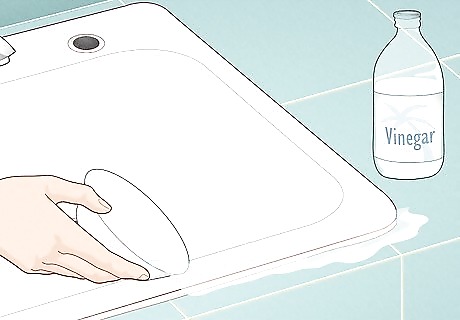
This is the gentlest way to remove silicone caulk residue. Mix water and white vinegar in an empty spray bottle at a 1:2 ratio. Apply the substance to the caulk residue and let it sit for 5-10 minutes. Then, wipe up the substance from the surface along with the residue. Since white vinegar is so gentle, it may take a few rounds before it removes all of the residue.
Isopropyl alcohol

Remove silicone from painted surfaces or plastic with alcohol. Soak a cloth in isopropyl alcohol and let it sit over the caulk residue for up to 2 days. Then, remove the cloth and scrape away the residue with a putty knife. The alcohol should have softened it enough so that it's easy to remove. If rubbing alcohol is all that you have, you can use that instead. It just may take a few rounds before all of the caulk residue is gone.
WD-40

WD-40 is a lubricant that can easily break down silicone caulk. First, clean the area with soap and water so that the WD-40 will be able to properly adhere to the residue. Let it dry and put on gloves. Then, use the straw on your can of WD-40 to thoroughly spray down the caulk residue. Let it soak for 2-5 minutes and then use a putty knife to scrape off the remaining residue. If the residue is old or particularly thick, you may have to repeat this process a few times. Re-clean the surface with soap and water before each reapplication of WD-40.
Mineral spirits
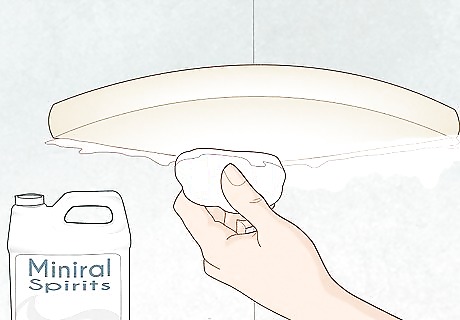
Use spirits for silicone caulk on concrete, marble, or porcelain. Put gloves on. Then, apply mineral spirits to a scrubbing pad and wipe down the caulk residue. If the residue is on plastic, use a rag soaked in mineral spirits instead. After you've wiped down the area, use a wet cloth to clean off the remaining residue and solvent. Mineral spirits, also known as white spirits, are a common alternative for paint thinner. Do not use spirits on painted surfaces—you’ll strip the color. Wash your hands thoroughly when you’re done if you get any spirits on your skin. Mineral spirits can irritate your skin if you don’t rinse off.
Acetone
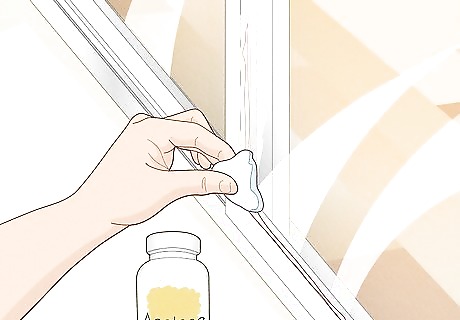
This is best for polyurethane caulk on glass and unpainted wood. Dampen a cloth with water and wring the excess out. Apply pure acetone to the cloth and wipe down the caulk residue. This will soften the residue so that you can wear away the residue with the cloth. Avoid using this substance on painted wood, as it can strip the paint off of the wood. Feel free to use a putty knife instead of a cloth if you can’t get the residue up.
Nail polish remover
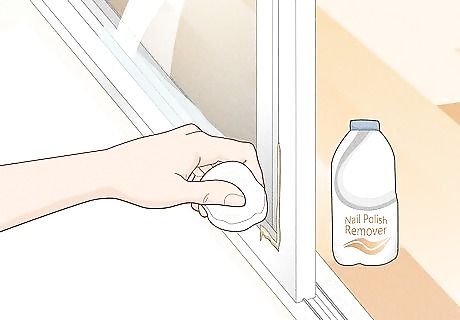
Nail polish remover is basically identical to acetone. It will get rid of polyurethane caulk just as well as acetone. Pour nail polish remover onto a damp rag and use it to clean off the caulk residue. The nail polish remover will be harsh enough to soften the caulk. Wipe the residue up and you’re good to go. Nail polish remover can damage painted wood, so only use this substance on surfaces like glass, plastic, and unpainted wood.
Baby oil or body lotion
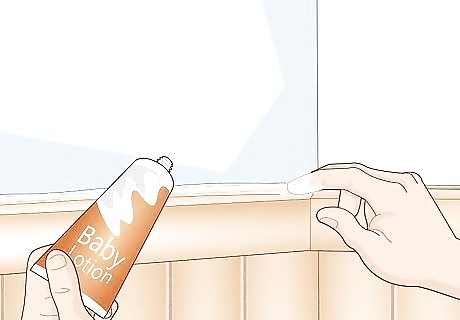
Baby oil and body lotion are both great for removing latex safely from wood. Wood is sensitive to damage, so don’t break out the harsher solvents. Use a putty knife or a spatula to remove as much residue as you can. Then, use a blow dryer to heat up and soften the remaining residue. Finally, rub either baby oil or body lotion on the caulk for 5 minutes or until it has softened up. Remove the residue with your putty knife or your spatula and you’re done. White vinegar is also gentle enough to use on wood. You may want to avoid getting the wood wet if you want to avoid swelling or water damage.
Hammer and chisel
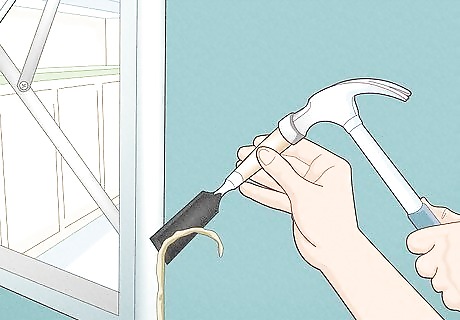
This method works well for concrete caulk residue. Hold a chisel to the edge of the residue, then hit the chisel with a hammer to remove it. Be careful to only try this method on surfaces that can handle it, like metal and steel. Don't use this method on porcelain, ceramic, and wood surfaces. Clean off any remaining caulk dust using a cloth and a gentle household cleaner.



















Comments
0 comment